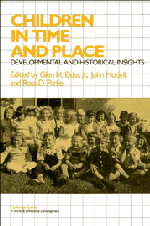Part III - Life transitions across historical time
Published online by Cambridge University Press: 03 May 2011
Summary
In Part III, we explore various life transitions that individuals undergo across development. By viewing these transitions through the dual lenses of the historian and the developmentalist, we can gain new insights into how life transitions are modified by the historical context or era in which they are embedded. In this part the first two chapters focus on adolescent transitions, and the third addresses a role transition – in this case, the transition to fatherhood.
In chapter 5, Steven Schlossman and Robert B. Cairns illustrate how our society has shifted in its treatment of girls who exhibit deviant behavior during their transition to adolescence. The authors compare contemporary and earlier eras, focusing on how our treatment of the same broad domain of social behavior either has changed or has remained constant across time. Socialization is always a product of the social norms of a culture at a particular time and of the particular institutions that have been given responsibility for enforcing these norms. This notion is nicely illustrated by Schlossman and Cairns. They show us, first, how social norms that help us to decide which behaviors are to be regulated at different points in development are products of a particular historical period. In the 1940s and 1950s, girls were brought into court mainly for “status offenses” such as disobeying parents or truancy, or for being sexually active. In the mid-twentieth century, then, the courts were vehicles for regulating sexual morality – at least among girls.
- Type
- Chapter
- Information
- Children in Time and PlaceDevelopmental and Historical Insights, pp. 107 - 109Publisher: Cambridge University PressPrint publication year: 1993

